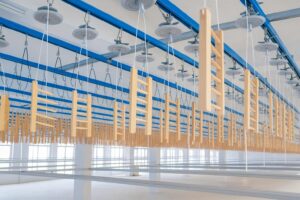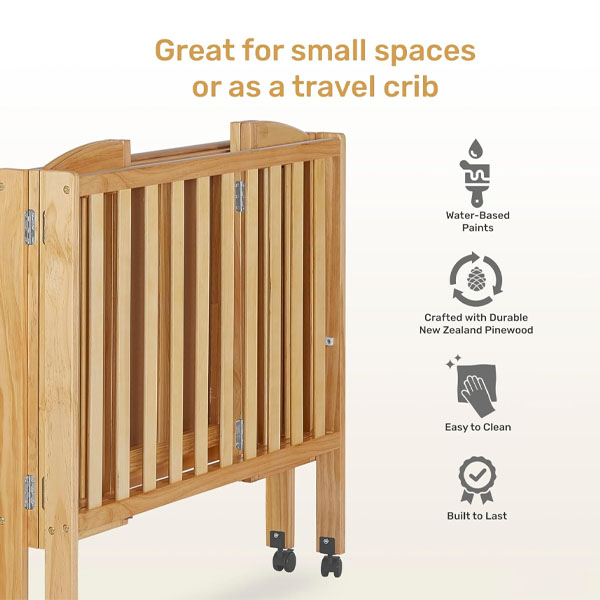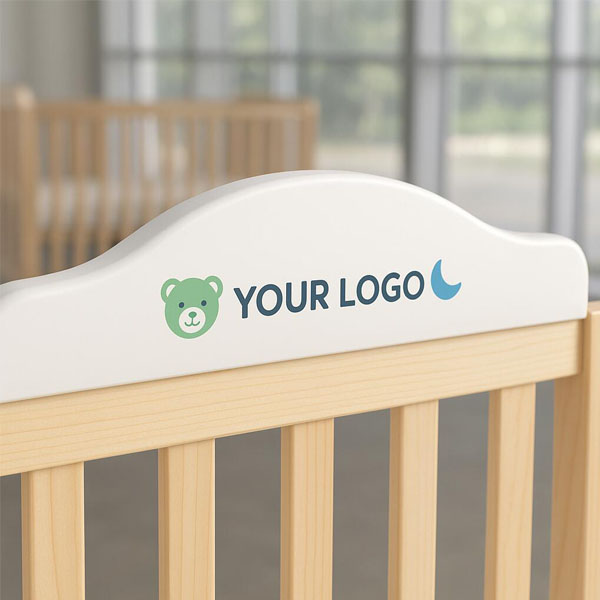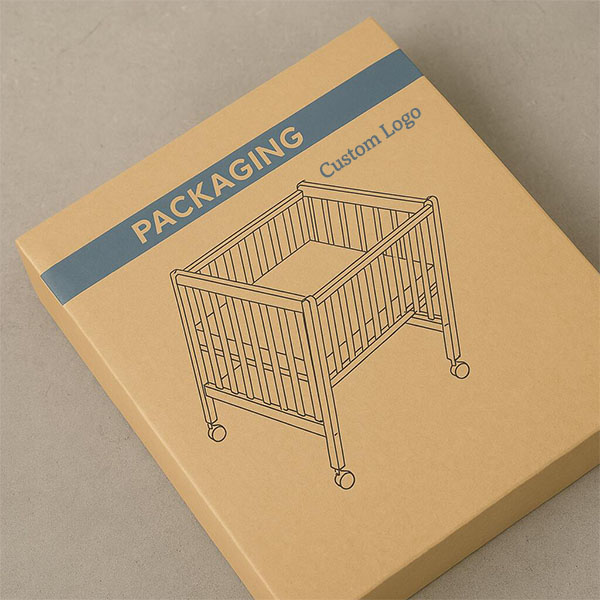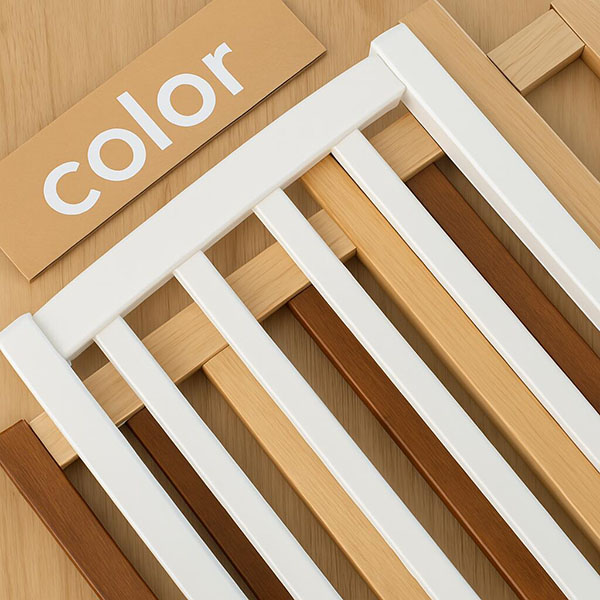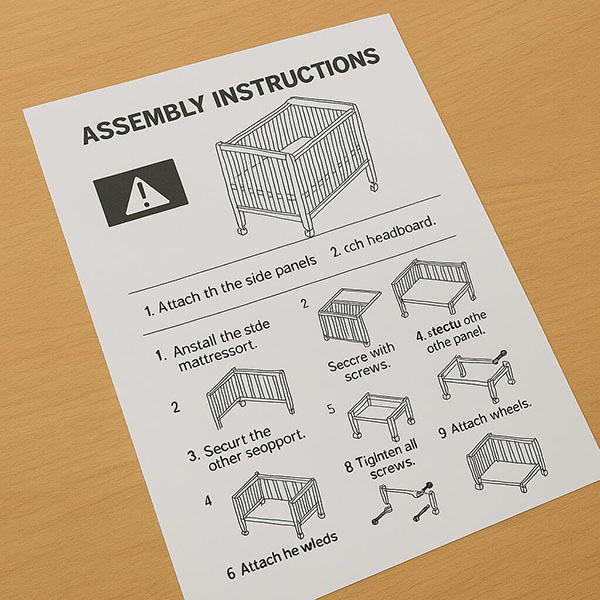Are cribs with wheels safe?
Wheeled cribs are convenient—but when it comes to your baby’s safety, can they be trusted?
Yes, cribs with wheels are safe when they meet safety standards and have reliable locking mechanisms on all wheels. Always lock wheels when the crib is in use.
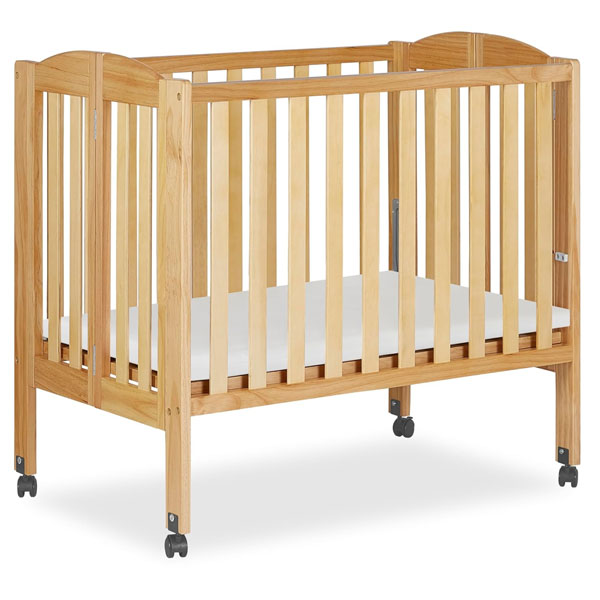
Mobility is helpful, especially in small spaces or for shared rooms. But let’s take a closer look at what makes wheeled cribs safe—or risky—and how to choose the right one.
What safety features should wheeled cribs have?
The wheels are only part of the picture—safety is all about design.
Safe wheeled cribs must have locking casters, a stable frame, and meet all crib safety certifications like JPMA and CPSC.
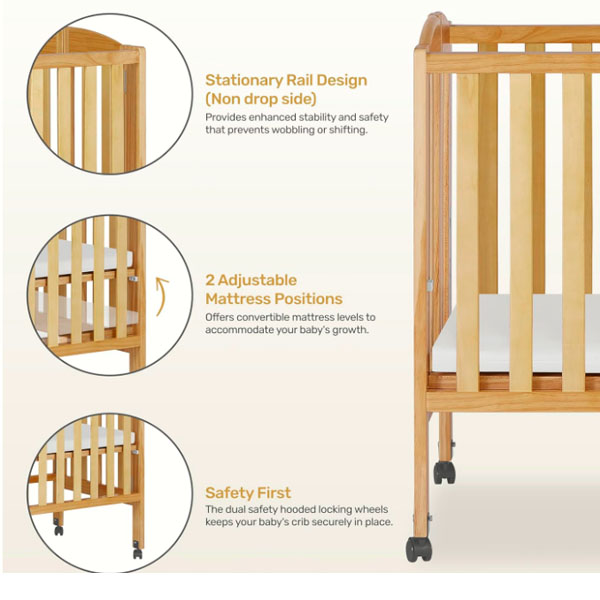
Look for these essentials
- Locking casters on all four wheels (or at least two diagonal)
- Wide base to reduce tipping risk
- Durable frame that doesn’t wobble or shift
- Fixed side rails (drop-side cribs are banned)
- Proper slat spacing (< 2 3/8 inches)
We used a mini crib with wheels during the newborn stage—it was a game-changer for room sharing. But we always double-checked the locks before each nap or bedtime.
| Feature | Why It Matters |
|---|---|
| Wheel locks | Prevent unwanted movement |
| Solid frame | Keeps crib stable during motion |
| Certification labels | Ensures crib meets national standards |
When are cribs with wheels especially useful?
Mobility helps—but only in the right setting.
Cribs with wheels are ideal for room sharing, small homes, and moving baby between spaces without disturbing sleep.

Use cases for wheeled cribs
- Newborn stage: Keep baby nearby without rearranging your whole room
- Daytime naps: Move crib from nursery to living area without lifting
- Small apartments: Easier to clean and shift furniture
- Multi-purpose rooms: Use the space more flexibly
We rolled our baby’s crib into the living room each morning, and back to the bedroom at night. No lifting, no fuss—and baby kept sleeping.
Are there any risks with wheeled cribs?
Yes—but they’re avoidable with proper use.
The main risks of wheeled cribs are tipping or movement if the wheels are not locked, especially as baby grows and stands.

How to stay safe
- Always lock the wheels once crib is placed
- Never roll crib while baby is inside and awake
- Stop using wheels if frame becomes unstable
- Avoid placing crib on sloped or uneven floors
As our daughter got older and started pulling up, we removed the wheels entirely. Most wheeled cribs let you take the casters off for extra stability later on.
Can I get a custom crib with wheels?
Yes—some manufacturers let you customize design, finish, and features like locking wheels.
Custom crib makers like Craftsliving offer mobile crib models with certified safety, sturdy builds, and optional features.
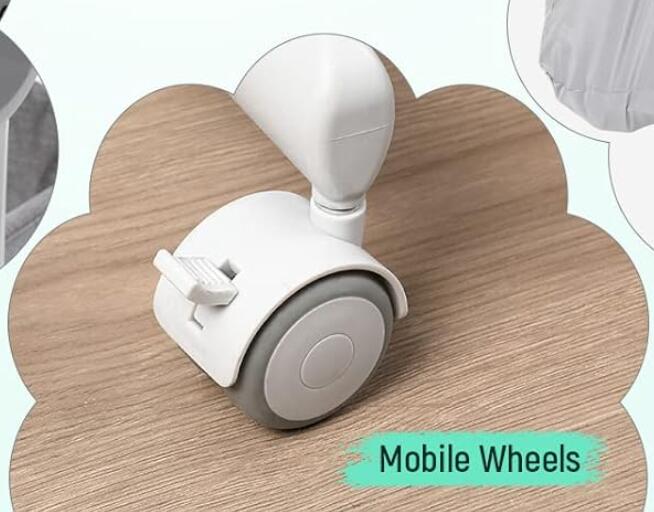
Craftsliving: Safe, mobile crib solutions
About Craftsliving
At Craftsliving, we build custom baby cribs, including models with wheels for easy mobility. Every crib meets current safety standards and includes:
- Secure locking caster options
- Solid wood frames for stability
- Custom size, color, and material options
- Bulk and wholesale pricing for families or stores
Whether you’re furnishing a tight space or want flexible nursery design, Craftsliving makes safe wheeled cribs that look good and move easily when needed.
We requested a crib on wheels for our small guest room-turned-nursery. Craftsliving delivered exactly what we needed—and it rolled smooth and locked tight.
Conclusion
Yes, cribs with wheels are safe—if they’re used wisely and built to standard.
Wheeled cribs are safe when they include reliable locks and strong frames, especially when custom-made by trusted brands like Craftsliving. Just lock the wheels before every nap.

